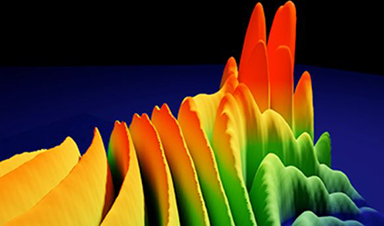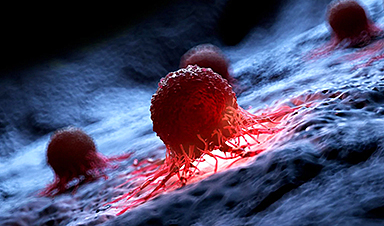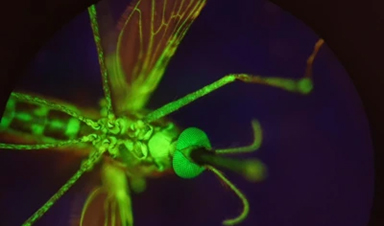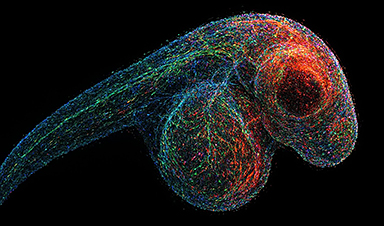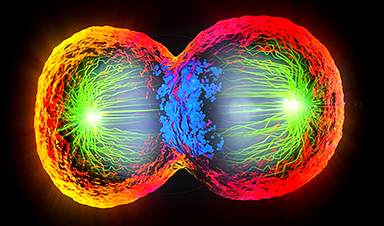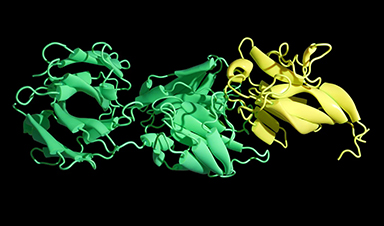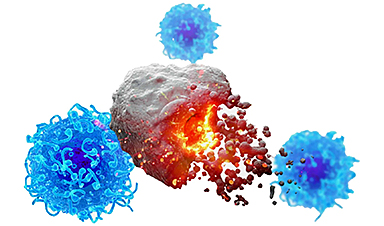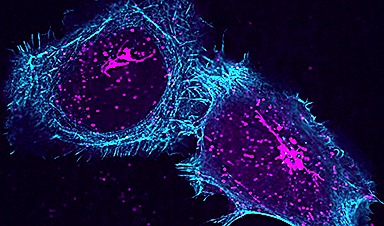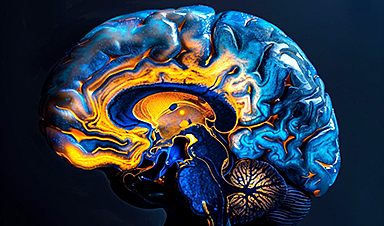| Ultrashort flashes of light lasting less than a quadrillionth of a second are fast growing in technological importance. In laser sources, pairs and groups of light flashes can be created instead of individual flashes. Similar to the chemically bonded atoms in a molecule, they are coupled with each other and their short temporal intervals can possess remarkable stability. | |
| Researchers at the Universities of Bayreuth and Constance have now revealed a cause for the stable coupling of ultrashort light flashes and found a way to control their spacing both very precisely and rapidly. They present their research results in the journal Optica (“Soliton molecules in femtosecond fiber lasers: universal binding mechanism and direct electronic control”). |
| Light flashes shorter than a quadrillionth of a second are also called femtosecond pulses. Today, they are used for researching energy materials, in the 3D manufacturing of components, or as precision scalpels in medicine. In lasers, these flashes are created as solitons, stable packets of light waves. | |
| The findings about their coupling that have now been published were obtained on a laser resonator. This contains a ring of glass fibres that allows the solitons to circulate endlessly. In such systems, one often observes coupled femtosecond flashes, so-called soliton molecules. By using high-resolution real-time spectroscopy, the research team succeeded in tracking the dynamics of two coupled flashes in real time during many hundreds of thousands of orbits. | |
| Based on this data, the scientists were able to show that it is optical reflections within the laser resonator that couple the individual solitons in time and space. The binding distances could be predicted on the basis of transit time differences within the resonator and could finally be precisely adjusted by shifting optical elements. | |
| In addition, the new study shows how the bond between two flashes can be quickly loosened and a new bond created. It is now possible, for example, to specifically switch back and forth between light flashes that occur in pairs and have different temporal intervals. “Based on our research results, it is now possible to switch soliton molecules at the push of a button. This opens up new perspectives for the technical application of femtosecond pulses, especially in spectroscopy and materials processing,” says Luca Nimmesgern B.Sc., first author of the study and physics master’s student at the University of Bayreuth. The findings obtained at the laser resonator can be transferred to a variety of ultrashort pulse laser sources. Consequently, it is possible to generate coupled light flashes in other laser systems and switch their distances without much effort. | |
| “Since the first reports of pulse pairs in fibre lasers more than 20 years ago, different explanations have been proposed for the stability of soliton molecules in lasers. The usual models have been contradicted by numerous observations, but are still used today. Our new study now offers a precise explanation compatible with the measured data for the first time. In a way, it provides a piece of the puzzle that makes a multitude of earlier data understandable. Now, complex laser physics can be used specifically to generate soliton sequences at high speed,” says Georg Herink, Junior Professor for Ultrafast Dynamics at the University of Bayreuth and coordinator of the research work. |
News
The CDC buried a measles forecast that stressed the need for vaccinations
This story was originally published on ProPublica, a nonprofit newsroom that investigates abuses of power. Sign up to receive our biggest stories as soon as they’re published. ProPublica — Leaders at the Centers for Disease Control and Prevention [...]
Light-Driven Plasmonic Microrobots for Nanoparticle Manipulation
A recent study published in Nature Communications presents a new microrobotic platform designed to improve the precision and versatility of nanoparticle manipulation using light. Led by Jin Qin and colleagues, the research addresses limitations in traditional [...]
Cancer’s “Master Switch” Blocked for Good in Landmark Study
Researchers discovered peptides that permanently block a key cancer protein once thought untreatable, using a new screening method to test their effectiveness inside cells. For the first time, scientists have identified promising drug candidates [...]
AI self-cloning claims: A new frontier or a looming threat?
Chinese scientists claim that some AI models can replicate themselves and protect against shutdown. Has artificial intelligence crossed the so-called red line? Chinese researchers have published two reports on arXiv claiming that some artificial [...]
New Drug Turns Human Blood Into Mosquito-Killing Weapon
Nitisinone, a drug for rare diseases, kills mosquitoes when present in human blood and may become a new tool to fight malaria, offering longer-lasting, environmentally safer effects than ivermectin. Controlling mosquito populations is a [...]
DNA Microscopy Creates 3D Maps of Life From the Inside Out
What if you could take a picture of every gene inside a living organism—not with light, but with DNA itself? Scientists at the University of Chicago have pioneered a revolutionary imaging technique called volumetric DNA microscopy. It builds [...]
Scientists Just Captured the Stunning Process That Shapes Chromosomes
Scientists at EMBL have captured how human chromosomes fold into their signature rod shape during cell division, using a groundbreaking method called LoopTrace. By observing overlapping DNA loops forming in high resolution, they revealed that large [...]
Bird Flu Virus Is Mutating Fast – Scientists Say Our Vaccines May Not Be Enough
H5N1 influenza is evolving rapidly, weakening the effectiveness of existing antibodies and increasing its potential threat to humans. Scientists at UNC Charlotte and MIT used high-performance computational modeling to analyze thousands of viral protein-antibody interactions, revealing [...]
Revolutionary Cancer Vaccine Targets All Solid Tumors
The method triggers immune responses that inhibit melanoma, triple-negative breast cancer, lung carcinoma, and ovarian cancer. Cancer treatment vaccines have been in development since 2010, when the first was approved for prostate cancer, followed [...]
Scientists Uncover Hidden Protein Driving Autoimmune Attacks
Scientists have uncovered a critical piece of the puzzle in autoimmune diseases: a protein that helps release immune response molecules. By studying an ultra-rare condition, researchers identified ArfGAP2 as a key player in immune [...]
Mediterranean neutrino observatory sets new limits on quantum gravity
Quantum gravity is the missing link between general relativity and quantum mechanics, the yet-to-be-discovered key to a unified theory capable of explaining both the infinitely large and the infinitely small. The solution to this [...]
Challenging Previous Beliefs: Japanese Scientists Discover Hidden Protector of Heart
A Japanese research team found that the oxidized form of glutathione (GSSG) may protect heart tissue by modifying a key protein, potentially offering a novel therapeutic approach for ischemic heart failure. A new study [...]
Millions May Have Long COVID – So Why Can’t They Get Diagnosed?
Millions of people in England may be living with Long Covid without even realizing it. A large-scale analysis found that nearly 10% suspect they might have the condition but remain uncertain, often due to [...]
Researchers Reveal What Happens to Your Brain When You Don’t Get Enough Sleep
What if poor sleep was doing more than just making you tired? Researchers have discovered that disrupted sleep in older adults interferes with the brain’s ability to clean out waste, leading to memory problems [...]
How to prevent chronic inflammation from zombie-like cells that accumulate with age
In humans and other multicellular organisms, cells multiply. This defining feature allows embryos to grow into adulthood, and enables the healing of the many bumps, bruises and scrapes along the way. Certain factors can [...]
Breakthrough for long Covid patients who lost sense of smell
A breakthrough nasal surgery has restored the sense of smell for a dozen long Covid patients. Experts at University College London Hospitals NHS Foundation Trust successfully employed a technique typically used for correcting blocked nasal passages, [...]
